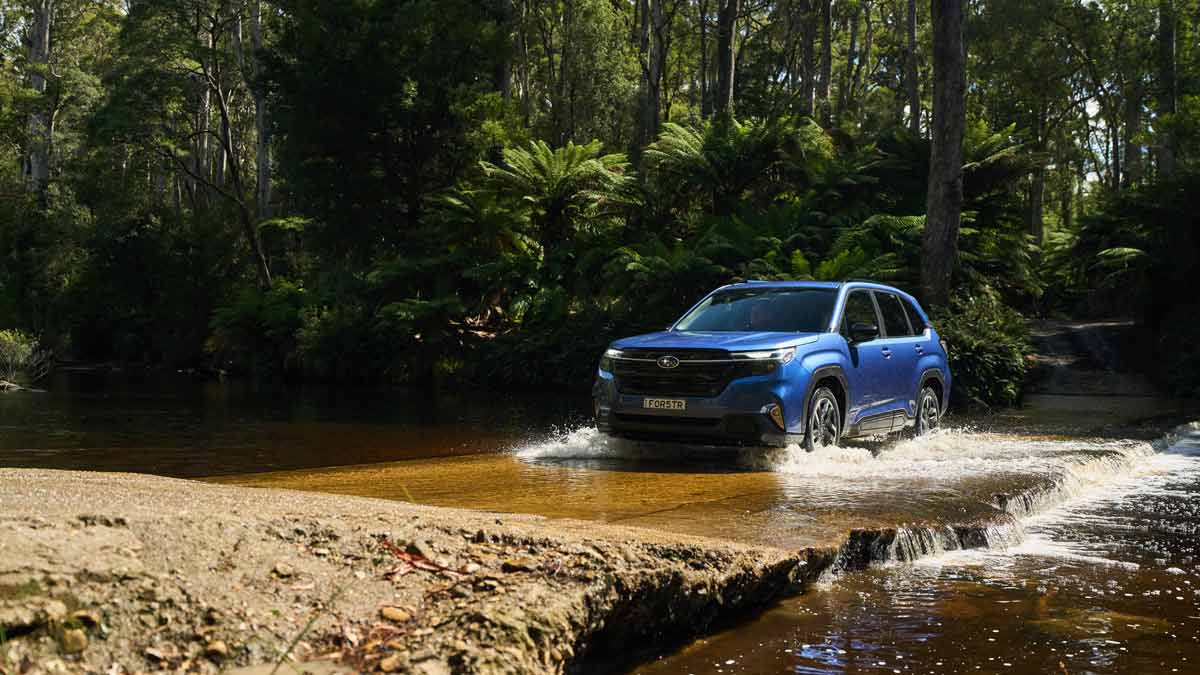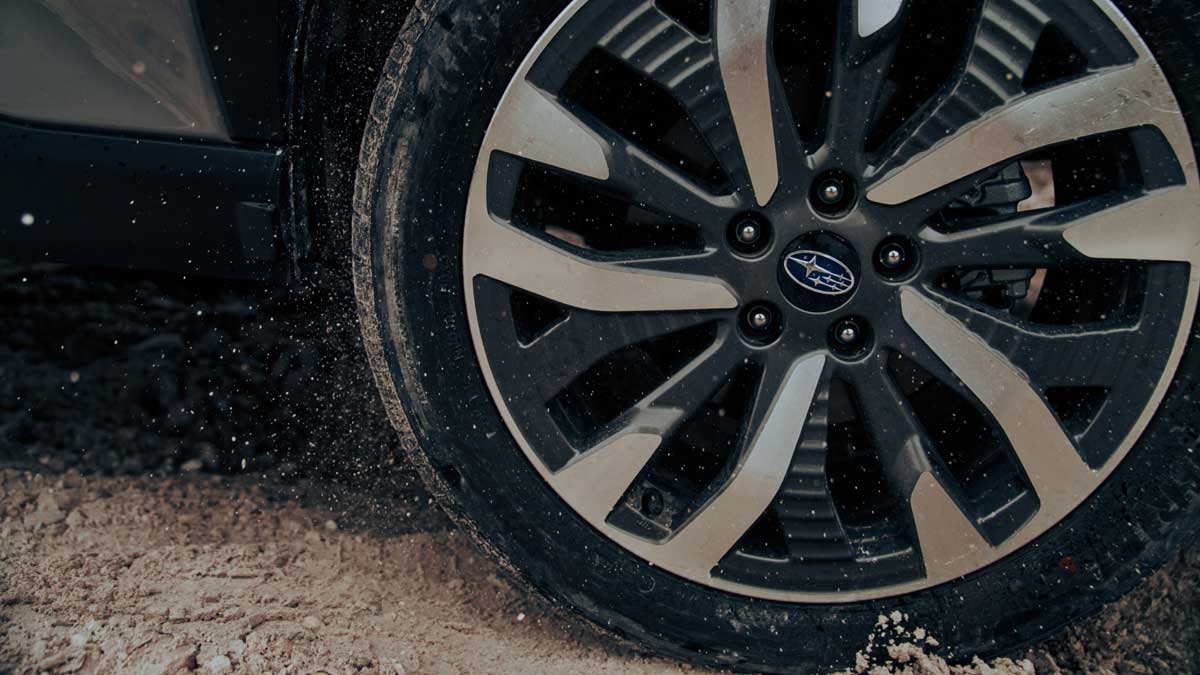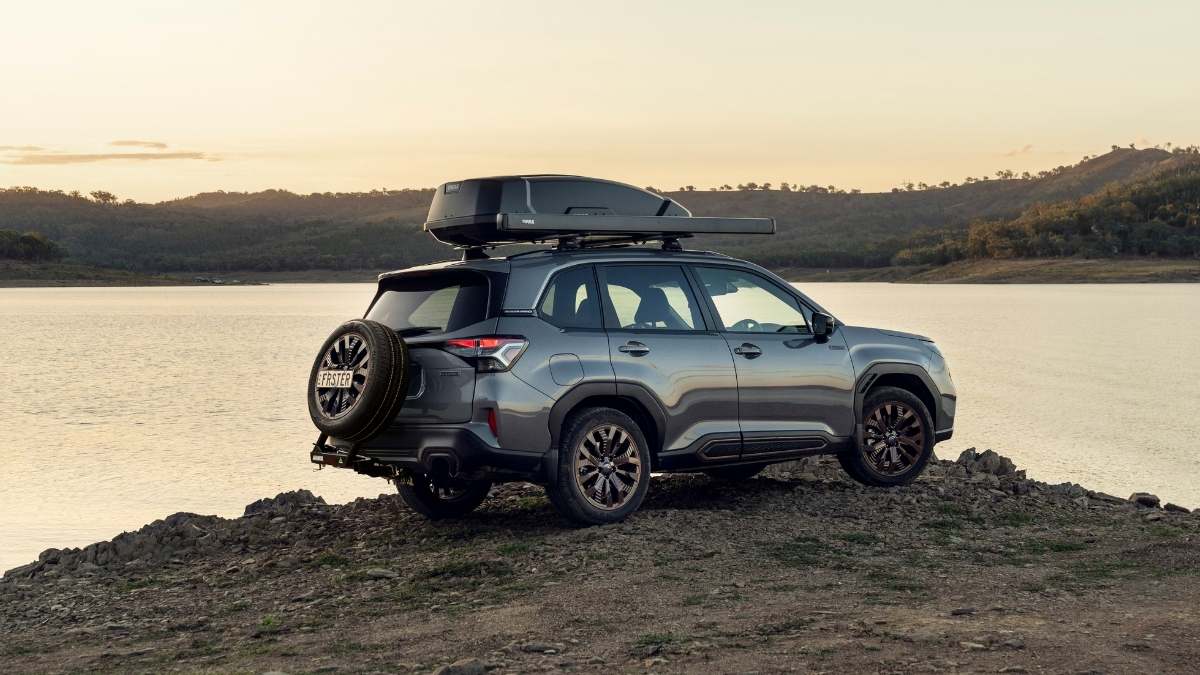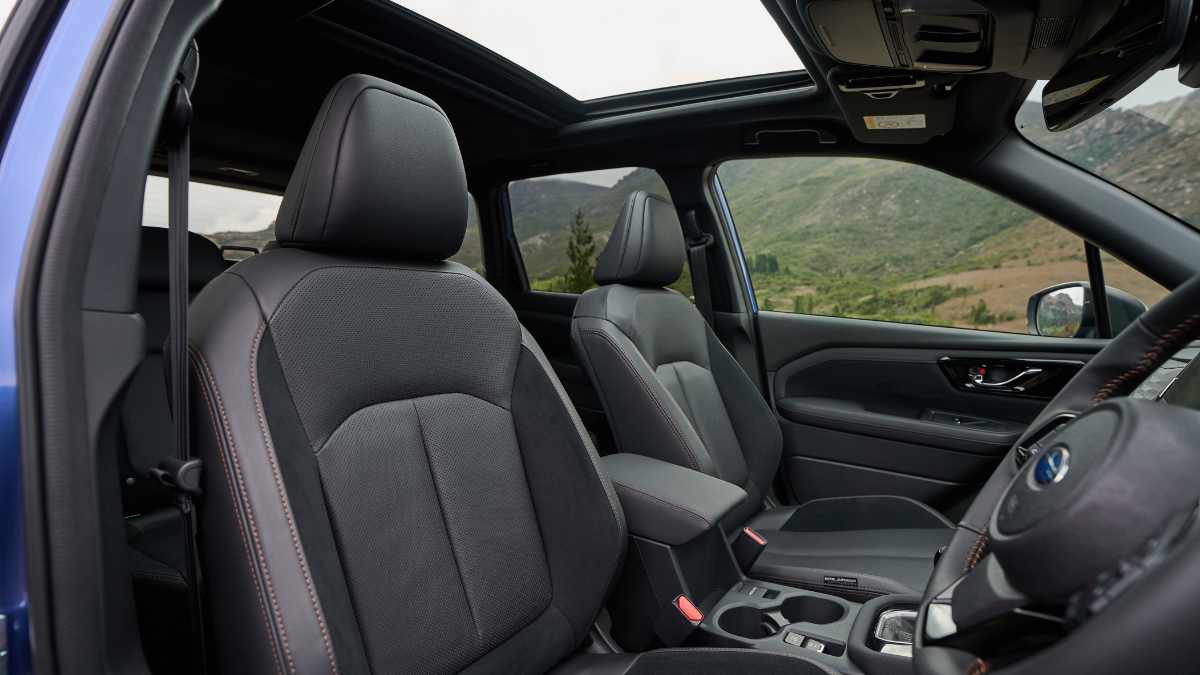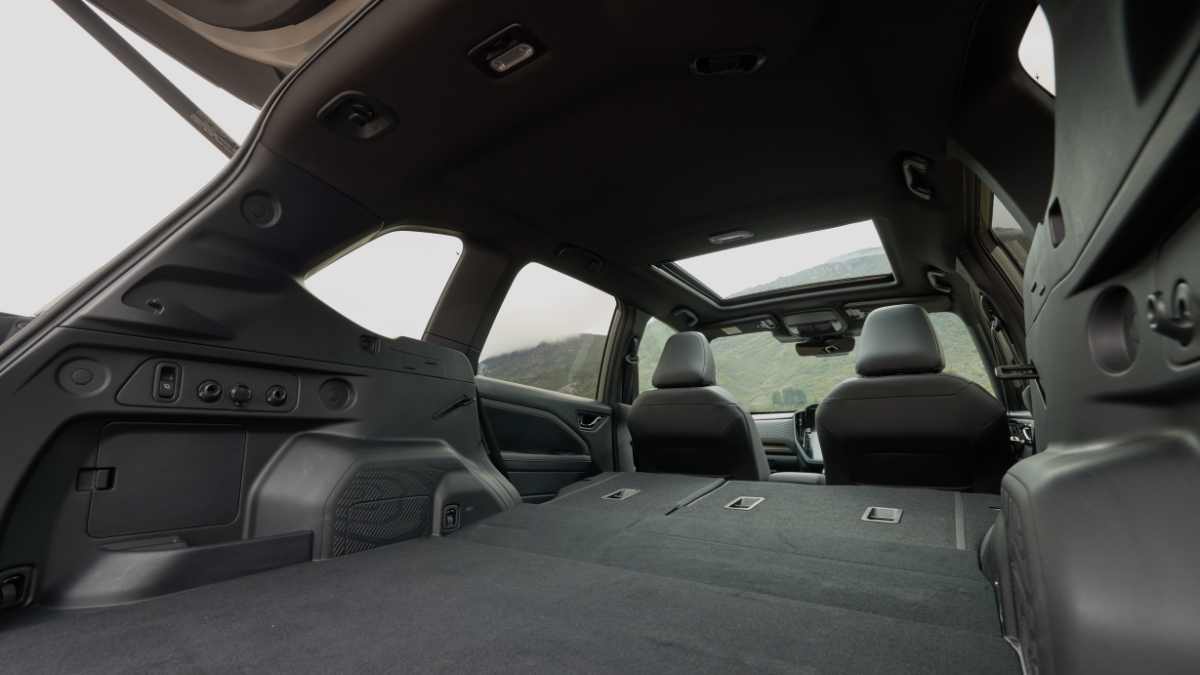A timely upgrade for the 2026 Kia Sportage brings fresh styling, new technology, mechanical tweaks and a better hybrid system, keeping this popular medium SUV among the best in class.
2026 Subaru Forester review
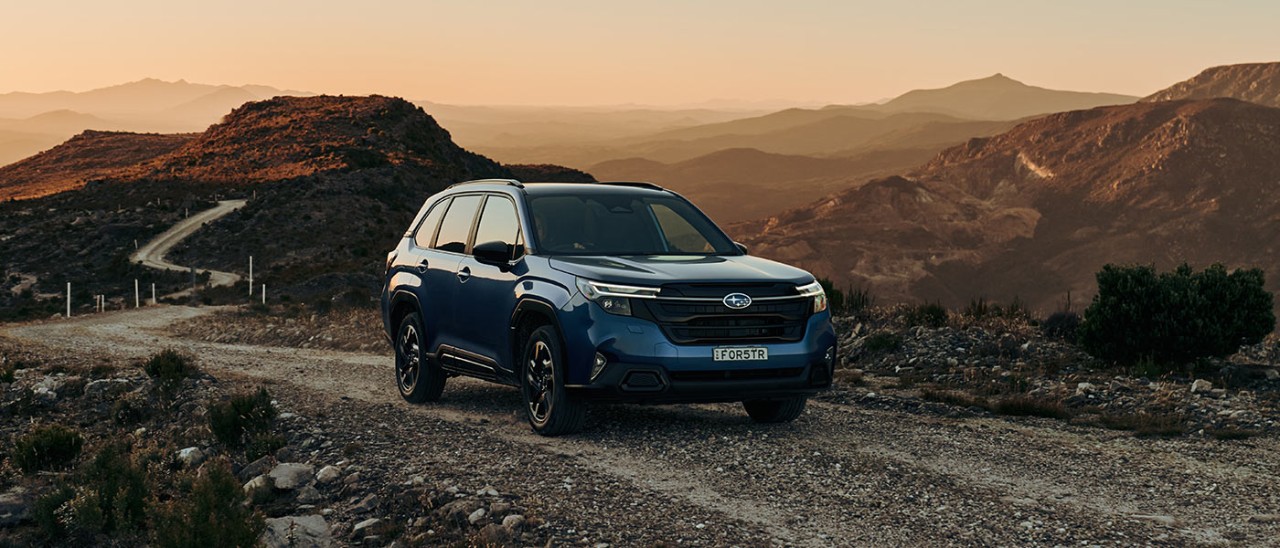
The sixth generation Subaru Forester has arrived in Australia and is now available with both a petrol engine and, for the first time, what Subaru describes as a ‘strong’ petrol hybrid powertrain. Can these upgrades keep the Forester competitive against medium SUV rivals?
Competing against the best-selling Toyota RAV4, which gets its own update in 2026, the Subaru Forester has been re-engineered with the aim of delivering a mid-size SUV which offers improved fuel economy as well as a more comfortable and rewarding drive.
In addition to selling against the RAV4, which is not only Australia’s favourite SUV, but the world’s best selling car, the 2026 Subaru Forester also goes toe-to-toe with an onslaught of new vehicles from Chinese brands.
With their crosshairs aimed squarely at established brands and nameplates, new entrants such as BYD, MG and GWM Haval, are arriving at budget prices, with design, engineering and technology that directly challenges traditionally popular brands, like Subaru.
With a fresh design, improved driveability and technology, does the new 2026 Subaru Forester have enough to keep us interested in the face of this remarkable challenge?
More: Search and compare new and used cars on sale today in Australia
On this page
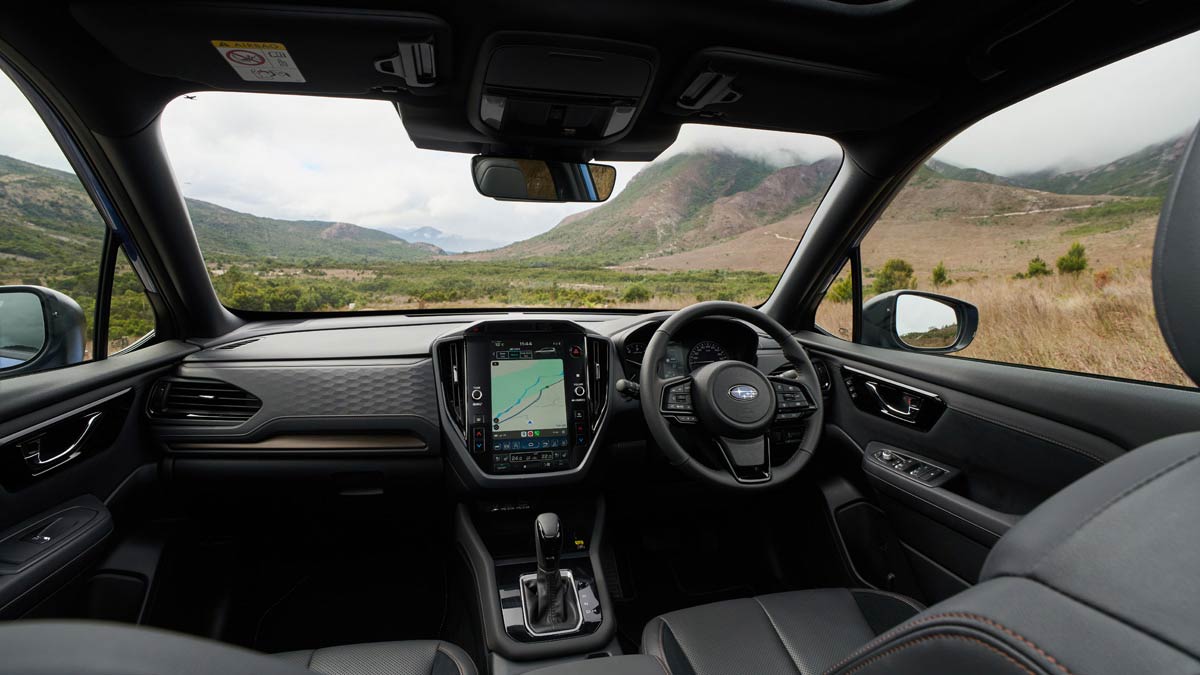
A well-functioning touchscreen system is highlighted in the new 2026 Subaru Forester
How much does the Subaru Forester cost?
The 2026 Subaru Forester is available with either a petrol engine or a new 'strong hybrid' powertrain and is priced from $43,490 plus on-road costs for the entry level petrol variant to $55,590 for the top spec Subaru Forester Touring Hybrid.
Depending on the variant, the new pricing reflects an increase of between $4800 and $5850 over the last generation Subaru Forester, reflecting a higher level of specfication and features.
Petrol models are powered by a 136kW 2.5-litre petrol engine paired with a continuously variable transmission (CVT), while hybrid models feature Subaru's next-gen hybrid e-Boxer which combines a 2.5-litre petrol Boxer engine with a 90kW electric motor and 1.1kWh battery for a combined 145kW output.
All 2026 Subaru Forester models feature permanent all-wheel drive, with higher spec models gaining X-Mode which improves traction on loose surfaces, mud and snow.
Seven variants are available across the Forester range including four petrol (AWD, Premium, Sport, Touring) and three hybrids (AWD Hybrid, Hybrid Sport, Hybrid Touring).
Features including Subaru Eyesight driver assistance technology, nine airbags, heated front seats, a large 11.6-inch infotainment touchscreen and wireless phone charging with Apple CarPlay and Android Auto are standard across the entire Forester range.
Subaru Forester AWD feature highlights include:
- 11.6-inch high-definition portrait-oriented touchscreen infotainment system with wireless Apple CarPlay and Android Auto connectivity, and a wireless Qi phone charger.
- Heated front seats, dual-zone climate control with rear vents, cloth upholstery, leather-wrapped steering wheel, and keyless entry with push-button start.
- EyeSight driver assist technology, encompassing a new wide-angle monocular camera, emergency driving stop system, front side radar, reverse automatic braking, and new driver monitoring system.
- Also standard are Subaru Vision Assist, nine airbags, and a panoramic 360-degree camera
- 18-inch alloy wheels, ladder-style roof rails, and automatic, steering-responsive LED headlights with front cornering lights and LED front fog lights.
Subaru Forester Premium models gain:
- Powered tailgate with kick sensor
- 8-way powered driver’s seat with lumbar support and memory function, and powered passenger seat.
- Integrated satellite navigation.
- An auto-dipping passenger-side mirror.
- Enhanced driver monitoring system (DMS) with seat and mirror memory functions
Subaru Forester Sport models also feature:
- Dark metallic 18-inch alloy wheels (19-inch on hybrid models)
- Sunroof
- 'X-Mode' with two drive modes to manage traction
- Sport styling including bronze accents on the front and rear bumper and side garnish.
- Water-repellent synthetic leather upholstery with green stitching.
- Premium instrument cluster
- 10-speaker Harman Kardon sound system (Hybrid only)
Subaru Forester Touring models add:
- 19-inch dark grey machined gloss finish alloy wheels. (Hybrid only)
- Leather and Ultrasuede accented seat trim, available in black or brown colour themes
- Leather gear shift
- Front seat ventilation (cooled seats)
- 10-speaker Harman Kardon sound system with a subwoofer and amplifier for a premium audio experience
All 2026 Subaru Forester models are backed by a five-year/unlimited kilometre warranty and hybrid models come with an eight-year/160,000km hybrid high-voltage battery warranty.
Scheduled servicing is due every 15,000km/12 months (whichever comes first) with pricing set the same for petrol and hybrid models. Over the first five years ownership, owners who choose to service their vehicle at Subaru will pay $2299.
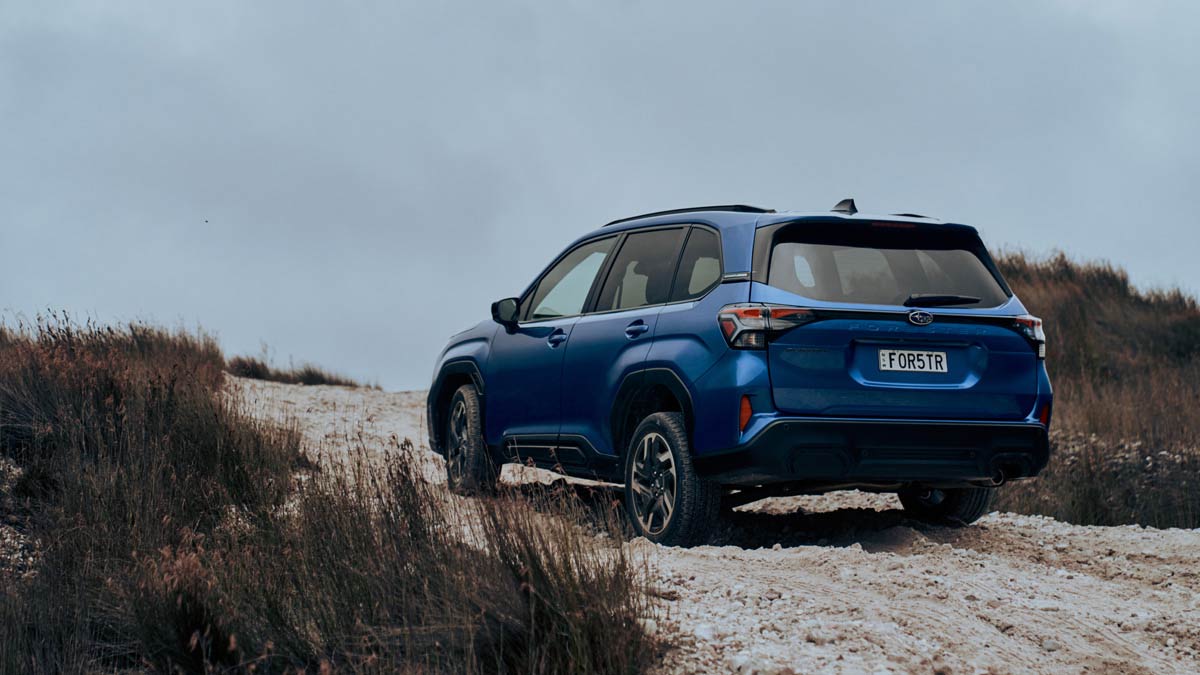
The 2026 Subaru Forester is available as both petrol and petrol-hybrid variants
| 2026 Subaru Forester range | |
|---|---|
|
Forester AWD |
$43,490 |
|
Forester AWD Premium |
$46,490 |
|
Forester AWD Sport |
$48,490 |
|
Forester AWD Touring |
$50,990 |
|
Forester AWD Hybrid |
$46,490 |
|
Forester AWD Hybrid Sport |
$54,990 |
|
Forester AWD Hybrid Touring |
$55,990 |
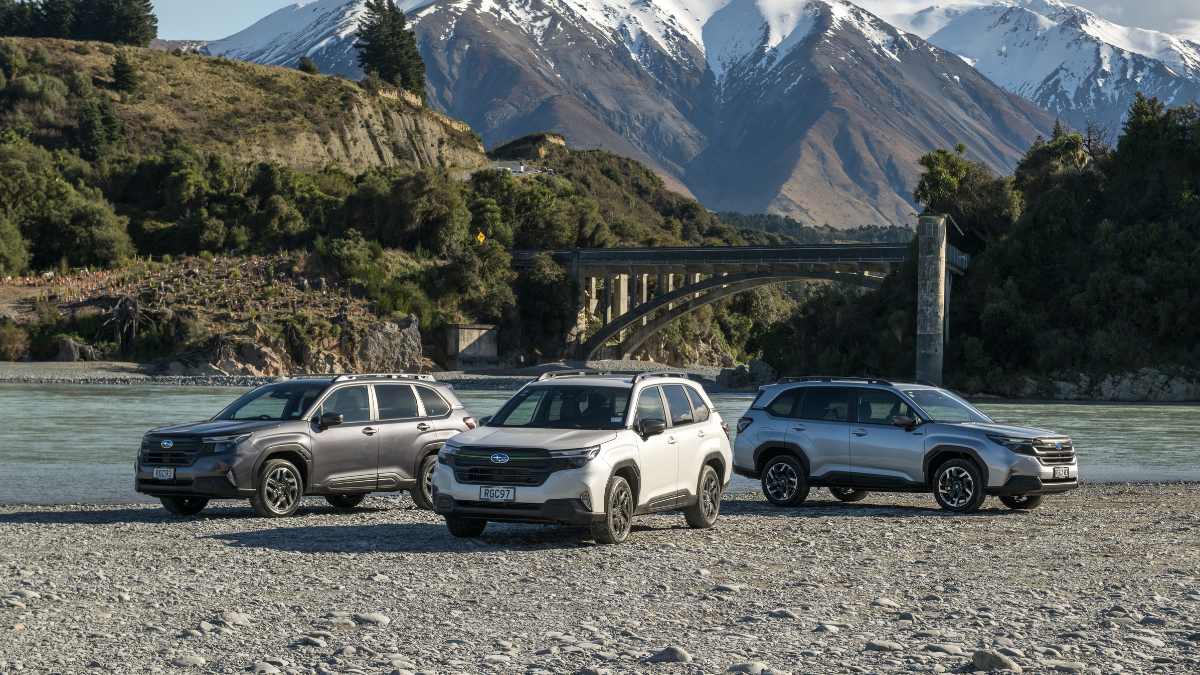
The 2026 Subaru Forester range is priced from $43,490 to $55,990 plus on-road costs
Subaru Forester exterior design
The boxy look of the Forester of old has evolved into something sleeker and more contemporary, yet it still retains traditional styling cues thanks to its class-leading ground clearance of 220mm.
A wider hexagonal grille is flanked by redesigned LED headlights, while black cladding on the lower body and on the wheel arches of the Forester signal its off-road credentials.
All new Subaru Forester models are fitted with 18-inch wheels and Falken tyres - with the exception of the Hybrid Sport and Hybrid Touring models which are fitted with 19-inch wheels and Bridgestone tyres. A bronze 19-inch wheel is exclusive to the Hybrid Sport model.
Roof rails are equipped to mid and top spec cars, and the exterior colour palette comprises eleven options including three new colours - Daybreak Blue Pearl, River Rock Pearl and Cashmere Gold Opal.
Read more: Australia's best medium SUVs
What is the Subaru Forester like inside?
The Subaru Forester has always been a popular mid-size SUV vehicle for active families, and the updated version plays to this strength. This is an accommodating five-seater with plenty of room in the front and rear, and sufficient space in the boot for a pooch or two.
Engineering work has focused on building a chassis which is stiffer and more refined, and that contributes to an environment which is improved for passengers. Noise attenuation was a focus for development so there's less intrusion from road and wind noise, making a big difference in the rear space - it's now easier to carry on a conversation with the driver.
Interior treatments vary between Forester variants and each serves to differentiate for different buyers. The cloth trim in the entry model is attractive and the heated seats a bonus at this price. Sport models feature water-resistant upholstery, which is arguably more practical and robust than the suede/leather finish finish in the top spec Touring models.
Despite the cabin updates, the new Forester feels somewhat more utilitarian than the new 2025 Mitsubishi Outlander Exceed Tourer, which offers up a more plush feel.
Doors are designed to open wide which makes getting in and out of the Forester easier and simpler for parents seeking to navigate loading children into car seats.
And speaking of car seats, there are two ISOFIX points in the back seat and three top tethers, and a boot that will swallow up a solid combination of prams, travel gear, sports equipment and more.
All new Subaru Forester models include a large portrait infotainment hub, centred around a touchscreen. It is well designed with a combination of user-friendly controls - a quick swipe section at the top of the screen makes it easy to find certain functions like the X-Mode and audio display without toggling out of the main screen.
Heating functions are simple to locate across the bottom of the screen, while a volume knob is both handy and easy to find - its surprising how a conventional array of controls can make the driving experience more satisfying.
Is the Subaru Forester good to drive?
Subaru says a comprehensive engineering effort went into refining the Forester's chassis and steering. It has resulted in a 10 per cent increase in torsional rigidity which results in a more composed ride and sharper handling.
Further upgrades include changing to a dual-pinion electric assist steering system, which relocates the motor to the rack rather than the column. It results in more responsive steering with significantly less steering effort required in cornering. On longer journeys, the result is a more relaxed driving feel, while for short and sharper stints behind the wheel, the Forester feels a lot more car-like.
The Forester's new-found dynamism was on show on the roads of New Zealand's South Island where Subaru chose to showcase the updated vehicle. A route out of Christchurch towards the snow resort of Mount Hutt gave us ample time to sample and compare both the petrol version and the new hybrid. The surefootedness of the Subaru symmetrical all-wheel drive system delivered confidence on an extensive run of loose shale and gravel roads, while the sharper steering gives improved feedback to the driver with the Forester managing changes in direction with confidence.
For drivers weighing up the petrol and hybrid versions, it's interesting to note that the fuel efficiency gains are not as significant for country driving as they are around town, and that's because the hybrid system does its best work in the urban environment. The Subaru's 2.5-litre naturally aspirated flat-four 'boxer' engine has a claimed fuel usage on the ADR Combined test of 7.9L/100km compared to the hybrid's claim of 6.2L/100km. On our test route we found each vehicle was around 1L/100km worse than the official claim, but the difference also sat around 1L/100km more usage in the petrol than the hybrid.
While the naturally aspirated petrol engine is consistent in operation rather than inspiring, it’s more engaging than the powertrain used in the 2025 Mitsubishi Outlander. Where the hybrid wins over the petrol in the new Forester is its improved acceleration and healthier torque. It's not a chalk and cheese comparison with the petrol, but some drivers may find the responsiveness preferable, even if the fuel savings are less compelling.

The 2026 Subaru Forester's permanent all-wheel drive system is perfectly suited to loose surfaces
What safety features does the Subaru Forester have?
The 2026 Subaru Forester has been awarded a five-star ANCAP safety rating with ANCAP claiming Child Occupant Protection and Vulnerable Road User Protection were standouts with scores of 91% and 86% respectively.
Maximum points were awarded for driver protection in the destructive side impact, oblique pole, and full width crash tests, although the latter saw weak chest protection for the adult passenger seated in the second row.
The Subaru Forester is equipped with nine airbags including a centre airbag to assist with protection of the front seat occupants in side impact crashes.
Subaru's latest EyeSight driver assistance technology is standard across every Forester model and adds a new emergency driving stop system which gives a series of alerts to the driver, eventually slowing and stopping the vehicle if it receives no input from the driver. There's also a driver monitoring system included for the first time in the Forester which is reasonably tuned as far as these systems go, predominantly visual alerts if it believes the driver is not paying attention, elevating to audible alerts for more flagrant breaches.
The Subaru Forester is not equipped with connected car hardware so does not offer post-crash technologies such as eCall which can assist with deploying emergency services in the event of an accident.
More: What is eCall and how crash detection technology can save lives
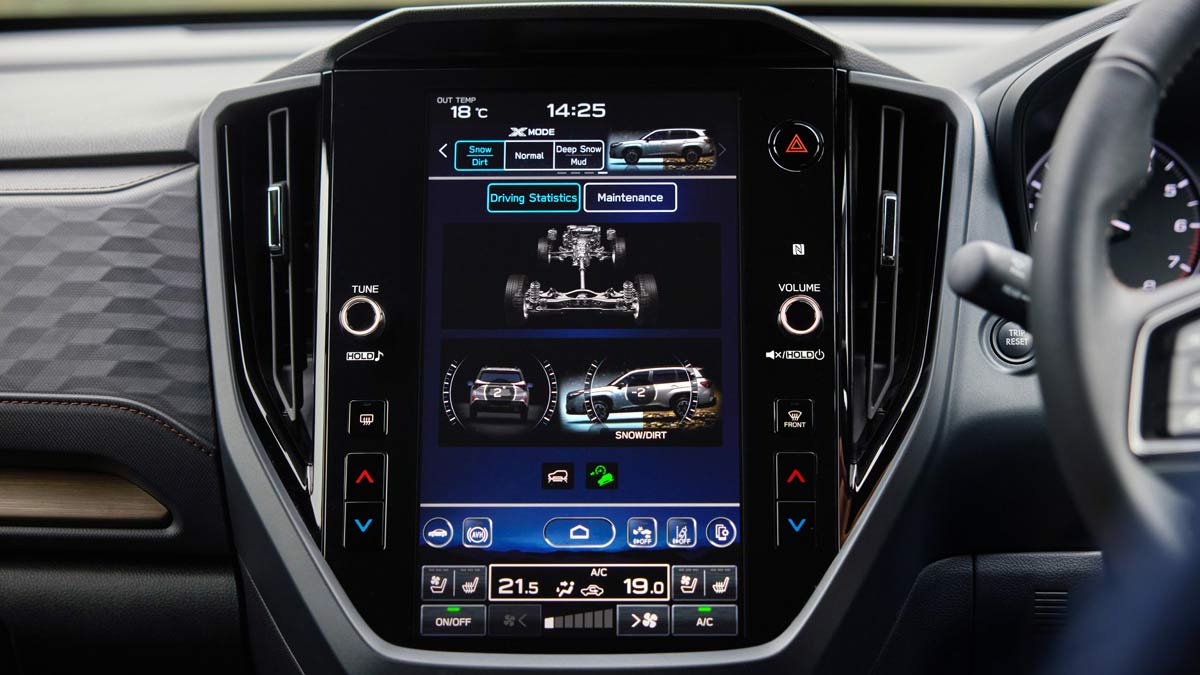
The Subaru Forester's large touchscreen allows for easy access to X-Drive controls and view the all-wheel drive information
How does the Subaru Forester compare?
The Australian medium SUV market is fiercely competitive with a strong emphasis on practicality, safety, fuel efficiency and technology. The new Subaru Forester, with its established reputation for all-wheel-drive capability and safety, enters a segment dominated by popular rivals like the Toyota RAV4, Mitsubishi Outlander, Hyundai Tucson, and Kia Sportage, plus an onslaught of affordable models from new Chinese brands.
There's plenty to interest Forester fans in the updated version, but its rivals acquit themselves better in some areas.
Despite being long in the tooth, the Toyota RAV4 offers class leading fuel efficiency from its hybrid system. The newly arrived Kia Sportage on the other hand has a premium feel. While the Forester has it covered on unsealed roads, the Sportage is arguably a better drive in suburbia.
Cross shoppers keen on a Japanese vehicle will also likely be considering the Mitsubishi Outlander, which has recently received some ride and handling upgrades of its own, making it a great-driving car for Australian roads. In top spec guise the Outlander offers a better level of finish with a more resolved interior, so it's likely to appeal more to drivers looking for long distance comfort.
More: Search and compare family cars
Should I buy a Subaru Forester?
Subaru has done a great job of updating the Forester and there's no doubt it delivers against the brand's reputation for a robust and capable SUV. Around town, it is outshone by the more comfortable Hyundai Tucson and Kia Sportage, but off the beaten track, the Forester is at home and has a surprisingly encouraging driving feel which is assured on loose surfaces.
Many regional drivers will find the Subaru Forester is well equipped but may not find much benefit in picking the hybrid over the more affordable petrol engine. The reduced braked towing capacity of the hybrid (down from 1800kg to 1200kg compared to the petrol), and the lack of a spare wheel may make that choice even easier.
Suburban motorists that still want the benefit of Subaru's all-wheel drive system for occasional trips to the country or the snow will see greater savings from the hybrid system and for them, the extra dollars up front will make a lot more sense.
The information provided is general advice only. Before making any decisions please consider your own circumstances and the Product Disclosure Statement and Target Market Determinations. For copies, visit racv.com.au. As distributor, RACV Insurance Services Pty Ltd AFS Licence No. 230039 receives commission for each policy sold or renewed. Product(s) issued by Insurance Manufacturers of Australia Pty Ltd ABN 93 004 208 084 AFS Licence No. 227678.
